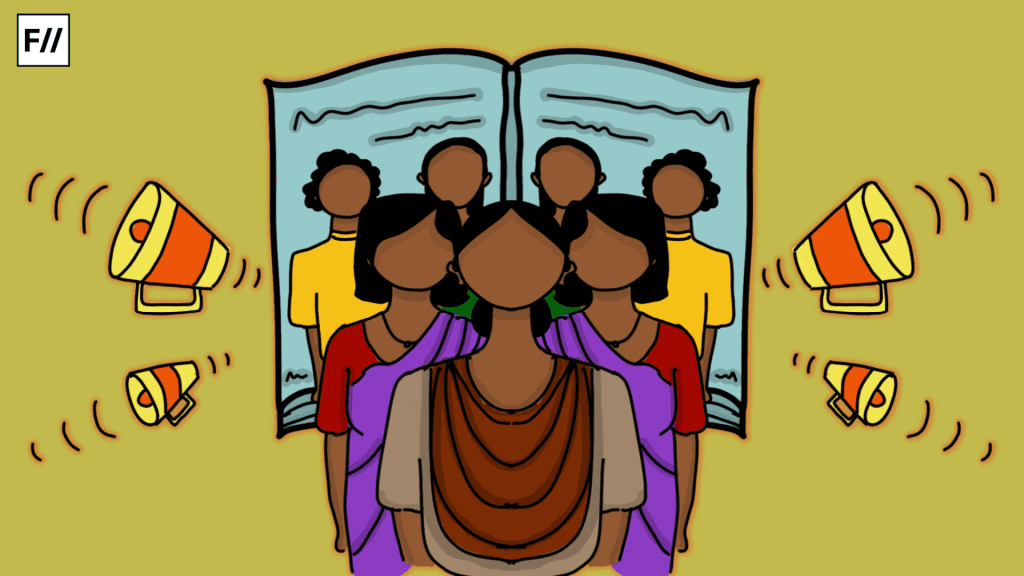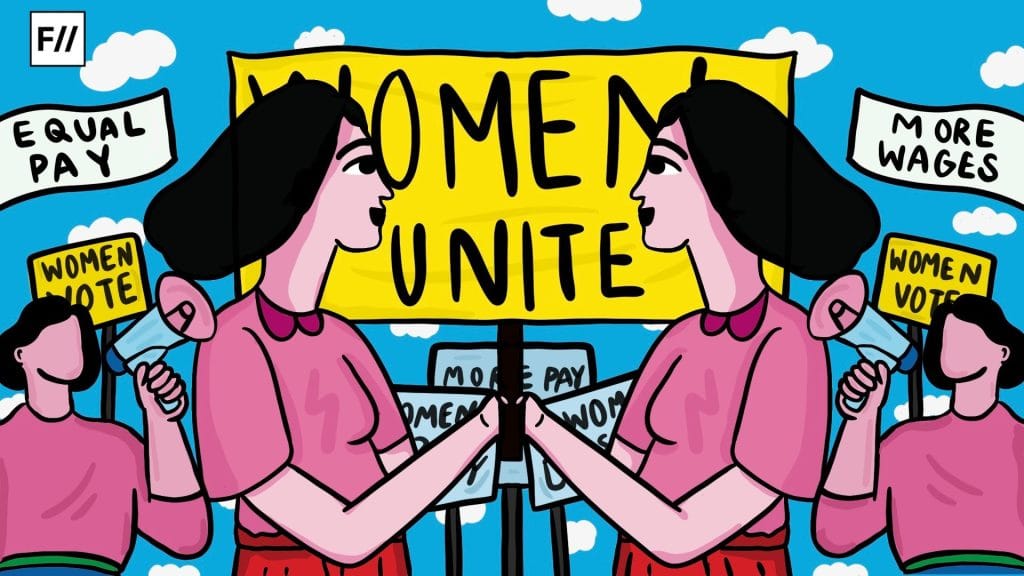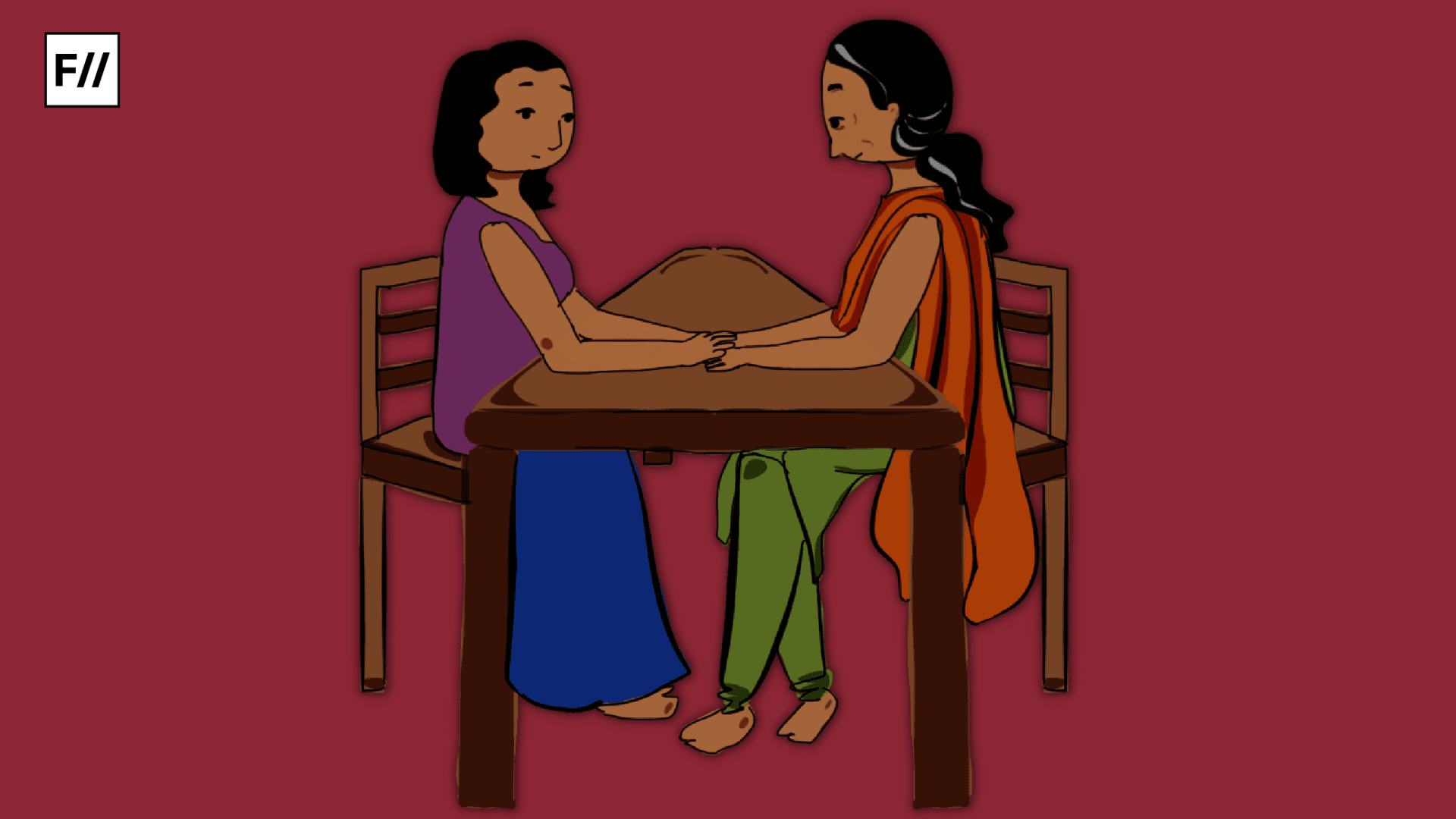Even when the need for gender equality happens to be an actively discussed subject, India seems to be one of those countries that display a strong resistance towards the collapse of patriarchy. In a patriarchal society, cishet men have the greatest amount of power, women have barely any, and most queer people can’t even self-identify as queer without facing severe consequences.
Some of the major factors that give rise to the freedom to think and act independently for the common citizen in any country include education, awareness, and financial independence. When access to opportunities for growth is systemically denied, it helps maintain gender inequity, thus taking away the freedom for women and queer people to be themselves, compelling them to be dependent on cishet men for everything.
Outdated gender stereotypes
The idea that men must be “providers” for their family members and women must be “caretakers” is unfair to both men and women. Caregiving for loved ones must come naturally and should not be forced, and to provide for oneself and their loved ones, everyone must have equal opportunities.
Unfortunately, in countries where outdated gender stereotypes remain the norm, men who don’t earn enough to support themselves and their family members and women who prioritise their careers and earnings over being homemakers or mothers or daughters-in-law are made to feel ashamed.
International Labour Organisation reveals many women can’t work due to caregiving duties
According to a recent report by the International Labour Organisation, India has 53 per cent of women outside the labour force due to caregiving responsibilities and need further investment in the care economy. This study uses data from 125 countries to understand labour force status, willingness to work, and reasons for being unavailable or not seeking work.

This study reveals that in 2023, 2.4 billion people aged 15 and above were not in the labour force, among whom 1.6 billion, or 66 per cent are women. Unsurprisingly, many women want to work but they can’t because they are compelled to spend their time and energy on caregiving responsibilities.
Women want to be part of the labour force, but they are systematically oppressed!
One could argue that these outdated gender stereotypes are right because women choose and prefer being homemakers and caregivers over being ambitious, curious, hard-working people who earn and contribute to the country’s economy, but the data tells us otherwise.
Among all the people who remain outside the labour force, 58 per cent of men and 34 per cent of women cite “personal reasons” for being unemployed, and 24 per cent of men and 15 per cent of women cite “not wanting or needing a job,” only 5 per cent of men but 45 per cent of women cite “care responsibilities” as the reason for not working.
(The lack of) education and unemployment
Preventing women and queer people from having access to education and awareness is a tested-and-tried way to maintain patriarchy in society. Among women who state “caregiving responsibilities” as the reason for not working, the level of education that these women have must be taken into account. In this sub-group of unemployed women, according to this study, while the 5 Arab states show the worst levels of lack of sufficient education, followed by 29 African countries, in 23 Asian and Pacific countries, a whopping 44 per cent of women have only “basic education” and 27 per cent of women have “less than basic education.” These figures also show that most women are not even given enough educational opportunities to learn skills that are deemed worthy of making sufficient money for themselves and their families and are instead compelled to stick to the gender stereotypes, which render them “good family women” and “caretakers” who will have to forever rely on their male counterparts for any financial support. Why in the 21st century do girl children in India have to face so many social, economic and cultural barriers to get even basic education?
Age as a factor
The study goes deeper to identify that age also plays a crucial role and that women in the prime age group (25 to 54 years old) who are either the childbearing age or the childrearing age tend to suffer the most. Women in this age group living in several countries across Africa, Asia, and the Arab states cite caregiving as the reason for not being able to work. This normalised practice continues to strengthen the existing patriarchal system at home and in society because, while men of this age group have the opportunity to learn skills and make money, women of this age group are forced to do unpaid labour at home.
Caste and Class – other important factors
Professor Ashwini Deshpande says that even at its peak, the recorded female labour force participation never crossed 40 per cent, and women from the marginalised sections such as the SC/ST groups showed a higher labour force participation because of two factors: these social groups have fewer taboos associated with women being workers, meaning that they are more encouraging for women to work, unlike the upper-castes, which see women working as a marker of “low-status,” and sadly, there is a much higher economic compulsion among these oppressed caste groups, so women are also naturally forced to work. Another finding in the study is that rural women are the worst affected.
How does this negatively impact women?
In a patriarchal society where crime against women and crime against queer people are common, being educated, being financially independent, and having a secure job offer the most promising support. When the freedom for education and employment is taken away, too many women find themselves stuck in abusive relationships and unhealthy, toxic family environments and cannot leave or escape because they are scared of leaving. Education and financial independence are the key factors that give privileged women the capacity and confidence to walk away from such situations and get the help they need.

Such systemic injustice is caused by patriarchal men who do not want equality. This study of gender-based violence by partners against women in low-income families in Bangalore, for instance, shows that women partners who continue to remain unemployed face less violence compared to women partners who were unemployed but then took up a job.
For such men, for whom violence is the quickest and easiest way to keep their partners under their control, the partner attempting to become financially independent is seen as a threat. This would understandably instill fear among survivors, who already have very little access to education and employment opportunities, and only pushes them further into the obedient, good, family woman stereotype, which rewards men and exploits women.
What must the government do to increase women’s participation in labour force?
When women participate in the workforce, it boosts the country’s economy. The Ministry of Labour does agree that women’s participation in the labour force is important: “Female participation in the labour force and access to decent work is very much essential for an inclusive and sustainable development of the country. At the macro level, greater participation of female in the workforce is good for the overall economy.” However, different studies reveal that women’s participation in the labour force has been declining over time!
Even though the average working woman from a low-income family still does not have a bank account in her name, one could argue that the government takes numerous steps to support working women and girl children’s education. Privileged women would agree that menstrual leave and maternity leave are still not enough and paternity leave is rarer. What is real is the gender pay gap!

To go from where we are to where we would like to be (assuming that we all want gender equality, women’s empowerment, and economic growth), we require changes on various levels. As a society, we need to work together to ensure that taboos about working women and outdated gender norms will no longer be entertained, and the government must ensure that women and girl children across the nation have access to basic human rights.
Angela Luci writes that active labour market policies are needed, particularly in less advanced countries, to promote women’s labour market participation in the interest of overall economic growth. If our government is financially strong enough to build the world’s tallest statue, which does not benefit the common citizen in any way, surely our government should have enough capacity to vigorously raise awareness across the country to end harmful and illegal cultural practices like girl child marriage and dowry for good and introduce better policies and systemic changes that would help women across the country to overcome gender, class, caste, and demographic barriers.
About the author(s)
Lakshmi Prakash is a data scientist. She sees practicing equality, humanity, and science as the only possible path to a progressive future and holds that the absence of any one of these will negate any growth in other areas. Her hobbies include reading fiction and non-fiction, learning something new, brisk-walking, cycling, and writing a chapter only to forget where she saved it.




